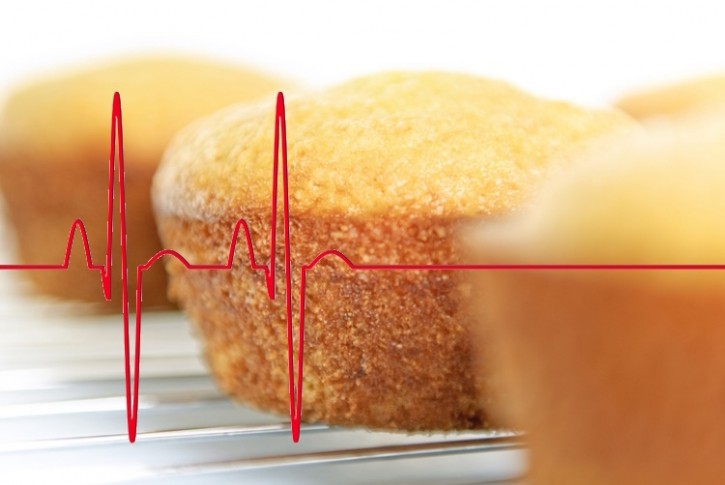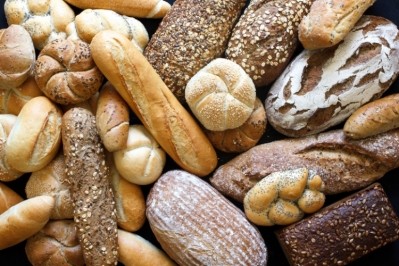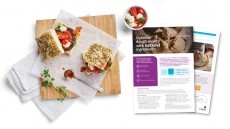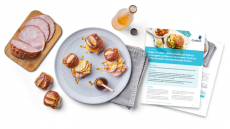Corn flour: The next champion of new product development?

The consumption of whole grains has long been known to slash the risk of chronic diseases such as cardiovascular disease, diabetes and cancer – thanks to their dietary fiber content and associated bioactive compounds, such as polyphenols. To date though, the majority of research has explored wheat-based foods, which many consumers perceive as less palatable (texture is denser, chewier or gritter and taste can be bland or earthier) than their low-fiber counterparts; one of the reasons for the fiber gap.
The fiber gap refers to the discrepancy between the recommended intake of dietary fiber and the actual consumption by individuals in many populations, particularly in developed countries.
Real results for heart health
Now, a new study has found that corn flour (a pantry staple) and corn bran (found online or at natural health stores) – which are easily be incorporated into a regular diet – go a long way to improve metabolic health.
Corn has a fiber content similar to wheat, with insoluble fiber (the good bit) comprising the largest fraction. And although the insoluble fiber content of corn is primarily cellulose and hemicellulose, it also contains the health-promoting bioactives arabinoxylan and ferulic acid.
“People often think dietary changes must be robust and significant to have a real impact on cardiovascular health and metabolic regulation,” said Dr Corrie Whisner, lead researcher and associate professor in the College of Health Solutions at Arizona State University.
“The bottom-line is this: corn is unique and underappreciated. The art and science of refining grains and making full use of corn bran can result in delicious foods that, in this case, also happen to produce real results for heart health.”
Better-for-you muffins and pitas
Study participants were provided with corn muffins and pita breads made from three types of corn flours: whole grain corn meal, refined corn meal (RCM), and a blend of RCM and corn bran (RCM + B).
“Our recipes were designed with the help of a master baker and used ingredients common in the baking and baked goods manufacturing industry that ensure robust tastes, textures and appearances (like gluten, lecithin, dough enhancer),” Dr Whisner told Bakery&Snacks.
To produce the RCM + B flour blend: 7.5g of corn bran was mixed with 16.5g of RCM to achieve a 24g serving of corn for each pita or muffin. This +/-30:70 ratio ensured a dietary fiber content that aligns to a FDA-approved ‘excellent fiber source’ health claim.
“Each muffin or pita contained exactly 24g of corn flour so participants only had to consume two items per day to achieve a 48g/d intake. We chose this amount to coincide with Whole Grains Council recommendations, which is roughly three servings of whole grains per day.”
Following this dietary pattern for four weeks, the researchers found 70% of the participants saw reductions in LDL cholesterol concentrations by anywhere from 5%-13.3% when consuming the blend. Participants didn’t see a decrease – or even an increase – in their LDL or total cholesterol levels when consuming the other corn flours.
Minimal impact on gut microbiota
Surprisingly, the findings didn’t reveal significant changes to gut microbiota diversity and participants reported no digestive discomforts or changes during the study.
Two genera – unclassified Lachnospiraceae and Agathobaculum – differed significantly by treatment and while an increase was seen in Agathobaculum (a common bacterium in the gut microbiota) during the whole grain corn meal phase, that change was not seen in the other two phases.
Over the course of the study, the participants individually cycled through each food intervention for four weeks – with a minimum of a two-week washout period in between interventions to return to baseline – to assess the impacts of each intervention more evenly.
“The changes observed in the gut microbiota were very subtle, resulting in only two significant changes across the different phases of the trial. This was likely due to the great variability in microbial composition across participants as everyone has a unique profile of microbe,” Dr Whisner told this site.
The 36 study participants were all located in Phoenix, Arizona, and spanned in age from 18-67. They included a mix of women (58%) and men, all with mild-to-moderately elevated LDL cholesterol levels.
“Further, corn contains larger amounts of insoluble fiber that may not be fermentable by gut microbes so the benefits to the gut may not be heavily driven by the microbes themselves but rather, other fiber mechanisms (eg, fecal bulking, laxation, etc.),” said Dr Whisner.
She noted the slight changes in the gut microbiota aligned with the amount of cornflour consumed by the participants during the study.
“We provided 48g/d of corn flour, split into two 24g servings per day. This amount was intentionally less than many other whole grain interventions so as to show proof of the beneficial impact of subtle and reasonable dietary/lifestyle changes.
“It was also a feasible amount that aligns with dietary recommendations. Comparing the results to individual fibers is challenging as fiber types are very diverse and, if extracted or isolated from their whole food source, may result in different responses in comparison to providing whole food or intact ingredients (eg, grain flours).
“Nonetheless, what is similar between our project and other studies using whole grains and fibers is these foods and ingredients tend to increase the abundance of microbes known to ferment dietary fibers. These microbes transform dietary fiber into important nutrients and signaling molecules, including short-chain fatty acids, which have positive health benefits in the gut and throughout the body.”
Dr Whisner added there were no differences in study outcomes based on age or gender, which makes the findings generalizable to people of all ages.
“At the time of recruitment and screening for the study, we considered each participant’s health history and dietary behaviors to ensure we could adequately study the impact of study foods without too much noise from other factors,” Dr Whisner told us.
“We excluded those taking probiotic or prebiotic supplements due to their known impacts on the gut microbiome. We also excluded those on statin drugs prescribed for lowering blood cholesterol and anyone with comorbid conditions including diabetes, cardiovascular disease and inflammatory bowel disorders which could have impacted the study outcomes. We did not set constraints on dietary intake of specific nutrients but did limit participation for those consuming vegan and gluten-free diets due to the ingredients in our study food recipes.”
Stealth health
Dr Whisner believes that while most consumers are aware of the importance of fiber, it’s often difficult to identify the products that fit their personal needs in local grocery stores.
“The best evidence of this is the average intake of dietary fiber among American adults falling around 15-17g/d, which is about half of the recommended intake. This number hasn’t budged for many years despite growing evidence for the health benefits of fiber. I think there are a lot of factors at play here including cost, convenience and misperceptions about taste/texture.
“To reach the masses and truly influence public health with grain-based fibers, we need a multipronged approach that combines both flagging high-fiber products with health claims and sneaking smaller amounts of fiber into more indulgent foods like chips, baked goods and so forth.
“At the end of the day, a little extra fiber isn’t going to hurt anyone and small amounts here and there will add up to big health benefits without breaking the bank.”
For many Americans, a total overhaul of their diet may not be feasible, especially with grocery bills rising. But Dr Whisner is quick to highlight that grain-based foods come in a variety of convenient, delicious and affordable options, including breads, pasta, cereal, granola bars, tortillas and baked goods.
“In a complex world with dynamic and unique consumers, we need flexibility so that people can personalize their approach to dietary intake and health,” she told us.
“I hope this study is a reminder of the benefit that bran can have on health while also encouraging industry partners to enhance the health-promoting profile of their products without sacrificing taste, texture and shelf life. Finely milled corn bran in our study foods was high accepted by study participants. We had no complaints about taste or texture.”
The new champions of NPD
The study – published in the Journal of Nutrition – was led by a team of researchers at Arizona State University, with funding from the Corn Division of the North American Millers’ Association (NAMA), a member of the Grain Foods Foundation (GFF).
“The findings underline what we already know: cereal fiber is a public health solution,” said Erin Ball, executive director of the GFF, told Bakery&Snacks.
“The findings further highlight the roles of a variety of fibers in health and disease prevention. The differences in LDL impact between whole grain flour and the refined grain flour + bran remind us there is not just one solution to American’s underconsumption of fiber and resulting health impacts.
“Dr Julie Miller Jones [professor emerita of nutrition at St Catherine University, Minnesota] has often said fibers are like all of the vitamins and minerals in a multivitamin: optimal health requires a variety of fibers in the same way that many different vitamins and minerals are required for complete nourishment.”
She added, “Beyond dietary recommendations and public health initiatives, I hope these findings encourage grain foods manufacturers to continue to push forward in research and development – especially thinking again about the opportunities that brans may offer for increasing the fiber content of the delicious foods they make.
“I am amazed at what manufacturers already do in the R&D space – revisiting bran as a nutrition-enhancing ingredient may be an opportunity for grain foods folks to also serve as champions of public health.”
Formed in 2004, the Grain Foods Foundation works to promote grain-based foods and nutrition through peer-reviewed science, experts in clinical and research nutrition and a science-based, grains-positive communications program. It’s funded by grain foods manufacturers, flour millers and members of the allied trades.
Study:
Authors: Corrie M Whisner, Bethany Liedike, Maissa Khatib, et al.
The Journal of Nutrition, Volume 154, Issue 8, August 2024, Pages 2437-2447
























